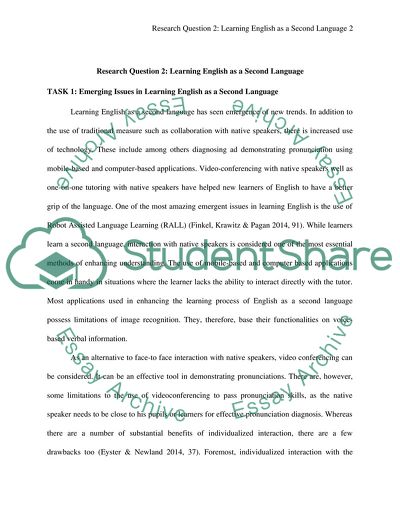Cite this document
(Emerging Issues in Learning English as a Second Language Assignment Example | Topics and Well Written Essays - 2000 words, n.d.)
Emerging Issues in Learning English as a Second Language Assignment Example | Topics and Well Written Essays - 2000 words. https://studentshare.org/english/1823709-research-question-2
Emerging Issues in Learning English as a Second Language Assignment Example | Topics and Well Written Essays - 2000 words. https://studentshare.org/english/1823709-research-question-2
(Emerging Issues in Learning English As a Second Language Assignment Example | Topics and Well Written Essays - 2000 Words)
Emerging Issues in Learning English As a Second Language Assignment Example | Topics and Well Written Essays - 2000 Words. https://studentshare.org/english/1823709-research-question-2.
Emerging Issues in Learning English As a Second Language Assignment Example | Topics and Well Written Essays - 2000 Words. https://studentshare.org/english/1823709-research-question-2.
“Emerging Issues in Learning English As a Second Language Assignment Example | Topics and Well Written Essays - 2000 Words”. https://studentshare.org/english/1823709-research-question-2.


